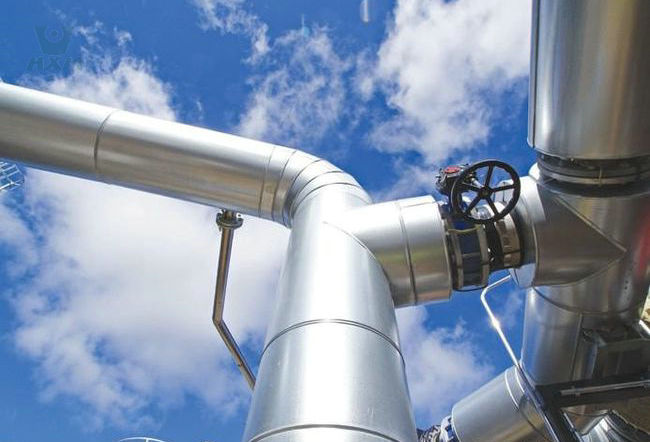Do you have any questions about our products or are you looking for a professional 304 stainless steel sheets supplier?
304 Stainless Steel Sheet and Plate Supplier
- Specification: ASTM 304, GB 0Cr18Ni9, UNS S30400, ASTM S30400, AISI 304, EN 1.4301, EN X5CrNi18-10, JIS SUS304, AFNOR Z6CN18.09, UNS 304S15, ISO 14, GOST 08X18H10.
- Features: excellent corrosion resistance, high strength, and good formability.
- Thickness: 0.05mm – 200mm
- Width: 600mm – 2000mm
- Length: 500mm-12000mm
- Finish: 2B, 2D, Black, NO.1, Anneal pickling
- MOQ: 2MT
Payment method: T/T, LC
Price: Inquiry Factory Price 301 stainless steel sheets Now
304 Stainless Steel Sheets and plates Data Sheet
304 Grade Description in Different Standards
ISO Name | ASTM | DIN / EN | JIS | GB | Other |
X5CrNi18-10 | S30400 / 304 | 1.4301 | SUS304 | S30408/ | 06Cr19Ni10 0Cr18Ni9 |
Chemical Components of 304 stainless steel plates
304 | C % | Si % | Mn % | P % | S % | Ni % | Cr % | Mo % | N % | Cu % |
ASTM | 0.08 | 0.75 | 2.00 | 0.045 | 0.030 | 8.0 – 10.5 | 18.0 – 20.0 | – | 0.10 | – |
DIN/EN | 0,07 | 1,00 | 2,00 | 0,045 | 0,015 | 8,0 – 10,5 | 17,5 – 19,5 | – | 0,10 | – |
JIS | 0.08 | 1.00 | 2.00 | 0.045 | 0.030 | 8.0 – 10.5 | 18.0 – 20.0 | – | – | – |
GB | 0.08 | 1.00 | 2.00 | 0.045 | 0.030 | 8.0 – 10.0 | 18.0 – 20. 0 | – | – | – |
Mechanical Properties of 304 stainless steel sheets
304 | Y.S./Mpa ≥ | T.S./Mpa ≥ | E.L./% ≥ | HB ≤ | HRB ≤ | HBW ≤ | HV ≤ |
ASTM | 205 | 515 | 40 | – | 92 | 201 | – |
JIS | 205 | 520 | 40 | 187 | 90 | – | 200 |
GB | 205 | 515 | 40 | – | 92 | 201 | 210 |
Physical Properties of 304 stainless steel sheets
| 304 | Density (g/cm³) | Melting point (℃) | Thermal conductivity (W/m-K) | Coefficient of thermal expansion (10^-6/K) | Elastic Modulus(GPa) | Poisson’s Ratio |
| ASTM | 7.93 | 1398-1454 | 16.2-24.9 | 17.3-17.8 | 200 | 0.3 |
| JIS | 7.93 | 1398-1454 | 16.2-24.9 | 17.3-17.8 | 193 | 0.3 |
| EN | 7.9 | 1400-1450 | 15-21.5 | 17.0-17.5 | 193 | 0.3 |
| GB | 7.9 | 1398-1454 | 16.2-24.9 | 17.3-17.8 | 193 | 0.3 |
Production Range
-304 Cold Rolled Stainless Steel Sheet and Plate, Cold rolled 304 sheets, Cold rolled 304 Plate
- Thickness: 0.05mm – 3.0mm
- Width: 600mm – 2000mm, the narrowed products pls check in strip products
- Length: 1000mm-6000mm
- Finish: 2B, 2D
-304 Hot Rolled Stainless Steel Sheet and Plate, Hot Rolled 304 Sheet, Hot Rolled 304 Plate,304 PMP, 304 CMP
- Thickness: 1.2mm – 200mm
- Width: 600mm – 3200mm
- Length: 500mm – 12000mm
- Finish: Black, NO.1, Anneal pickling
Product Description of 304 stainless steel sheet and plate
304 stainless steel sheets and plates are the most widely used stainless steel product. 304 grade is the most commonly used grade in stainless steel with more than 50% consumption in this field; usually, we say stainless steel, which is 304 grade by default unless otherwise specified;
The corrosion resistance of 304 can be satisfied in most general use. Even in freshwater, it can be used constantly without corrosion or rust. But 316L is recommended for better corrosion resistance in seawater, high salt, and marine climates.
304 Stainless Steel Sheet and Plate is the full name, usually, we call simple terms such as 304 sheets, 304 plates, stainless steel sheets, and stainless steel plates directly.
Features of 304 Stainless Steel Sheets
- Good corrosion resistance: 304 stainless steel sheets contain over 18% chromium and over 8% nickel, giving them excellent corrosion resistance. They can withstand the attack of many chemicals, such as acids, alkalis, salts, etc., making them suitable for various industrial, construction, and household environments.
- Excellent processing performance: 304 stainless steel plates have excellent processing performance and can be easily cut, bent, welded, and processed. This gives them great flexibility in manufacturing various equipment and components.
- High strength and toughness: 304 stainless steel sheets have high strength and toughness, able to withstand large external forces without deformation or fracture. This makes them perform well in situations requiring heavy loads or high stress.
Application of 304 Stainless Steel Sheets

Food Processing and Catering Industry
In the food industry, 304 stainless steel sheets are mainly employed in the fabrication of food processing equipment, storage units, transportation devices, etc. Their excellent corrosion resistance and hygienic properties ensure the quality and safety of food products, leading to widespread applications in food processing and storage.

Medical Equipment and Devices Industry
In the medical field, 304 stainless steel sheets are primarily used to manufacture medical equipment, surgical instruments, pharmaceutical storage equipment, etc. Their excellent corrosion resistance and hygienic properties guarantee the quality and safety of medical equipment and pharmaceuticals, thus finding extensive applications in the medical sector.

Construction and Decoration Materials Industry
In the construction sector, 304 stainless steel plates are widely used for both interior and exterior decoration, including doors, windows, wall panels, ceilings, handrails, etc. Due to their excellent corrosion resistance and aesthetic appeal, they meet the requirements for appearance and durability in residential buildings, commercial structures, hotels, hospitals, and other facilities.

Chemical and Petroleum Industry
In the chemical industry, 304 stainless steel plates are primarily utilized for manufacturing chemical equipment, storage tanks, pipelines, valves, pumps, etc. Their outstanding corrosion resistance and high-temperature performance allow them to withstand various corrosive media and high-pressure environments, making them extensively used in chemical production.
FAQ
304 stainless steel plates and 304L stainless steel plates both belong to 304 series stainless steel materials, their chemical composition is basically the same, the main difference is the carbon content and heat treatment method.
304L stainless steel plates than 304 stainless steel plates low carbon, carbon content can reach up to 0.03%, which makes 304L stainless steel plate has better corrosion resistance and weldability. Due to the low carbon content, 304L stainless steel plate is not easy to form intergranular corrosion when welding, which is an undesirable phenomenon that will reduce the corrosion resistance of stainless steel plate.
In addition, 304L stainless steel plates commonly used heat treatment is heated to a higher temperature, and then rapidly cooled, called quenching. This heat treatment can eliminate the stress and grain boundary corrosion of stainless steel plate and improve its corrosion resistance and mechanical properties. In contrast, 304 stainless steel sheets usually does not require quenching treatment because of its high carbon content and can be stress relieved by natural cooling.
In short, 304L stainless steel sheets have better corrosion resistance and weldability than 304 stainless steel sheets for environments that require high corrosion resistance. 304 stainless steel sheets, on the other hand, performs well in general, with higher strength and heat resistance properties.
304 stainless steel and 316 stainless steel are both commonly used stainless steel materials, and the differences between them are mainly in the following aspects:
- Chemical Composition: 304 stainless steel’s main composition is 18% chromium and 8% nickel, while 316 stainless steel’s main composition is 16% chromium, 10% nickel, and 2% molybdenum. Therefore, 316 stainless steel has higher corrosion resistance
- Corrosion Resistance: Because 316 stainless steel contains molybdenum, its corrosion resistance is stronger than 304 stainless steel, especially in high temperature and high chloride ion environments is more stable
- Physical Properties: 316 stainless steel has a slightly higher density than 304 stainless steel and higher tensile strength and yield strength than 304 stainless steel
- Price: 316 stainless steel is also more expensive than 304 stainless steel because of its better corrosion resistance and physical properties.
304 stainless steel plates are relatively difficult to machine. Since 304 stainless steel sheet has high strength and hardness, it requires the use of high cutting forces and strong mechanical forces during processing. In addition, because of its poor heat transfer properties, it is susceptible to high temperatures during cutting and machining and requires the use of suitable coolants and tool materials to avoid excessive thermal stress and deformation on the surface of the stainless steel plate. Therefore, processing 304 stainless steel plates requires experienced technicians and professional processing equipment.
304 stainless steel sheets are widely used in many different fields due to their good corrosion resistance, strength, and toughness. Its service life depends mainly on the following factors
- Environmental Factors: The environmental conditions in which the stainless steel sheet is used can affect its life, such as moisture, acid, and alkali environments can lead to corrosion and wear, which can affect its life
- Processing and Use Method: The processing and use method of stainless steel plate will also affect its life. For example, if improper processing methods are used in the manufacturing process, such as improper cutting or welding, it may lead to stress concentrations and cracks in the material
- Material Quality: The quality of the stainless steel plate will directly affect its life. High-quality stainless steel sheets usually have better corrosion resistance and toughness, and can therefore last longer.
In general, 304 stainless steel sheets can last for decades or longer if used and maintained under the right conditions.
The following are some suggestions for extending the life of 304 stainless steel sheets
- Clean Regularly: 304 stainless steel plate needs to be cleaned regularly to remove impurities such as dirt and grease, which can reduce corrosion and wear on the surface
- Avoid Harmful Chemicals: Avoid substances that cause corrosion and wear on 304 stainless steel sheets such as chemicals containing chlorine or oxidizers
- Proper Storage: Store 304 stainless steel sheets to avoid exposure to high temperatures and humidity to prevent corrosion and oxidation
- Regular Maintenance: Regular maintenance and care, including regular inspection of the surface of 304 stainless steel plates for damage, timely repair, and replacement
- Use the Right 304 Stainless Steel Plates: Use the 304 stainless steel plate that meets your actual needs, for example, you should choose the 304 stainless steel plate with proper thickness and reliable quality to ensure its stability and durability in the process of use
- Avoid Overheating: 304 stainless steel plates can intergranular corrosion at high temperatures, so you need to control the temperature and heating time when heating and welding to avoid overheating.
Get In touch
Ready to Elevate Your Projects? Dive into our Stainless Steel Collection and Submit Your Specifications Today!
Phone/WeChat:+86 13381673250
Email: [email protected]
Address: RM557, NO.1388 Jiangyue Road, Shanghai China









